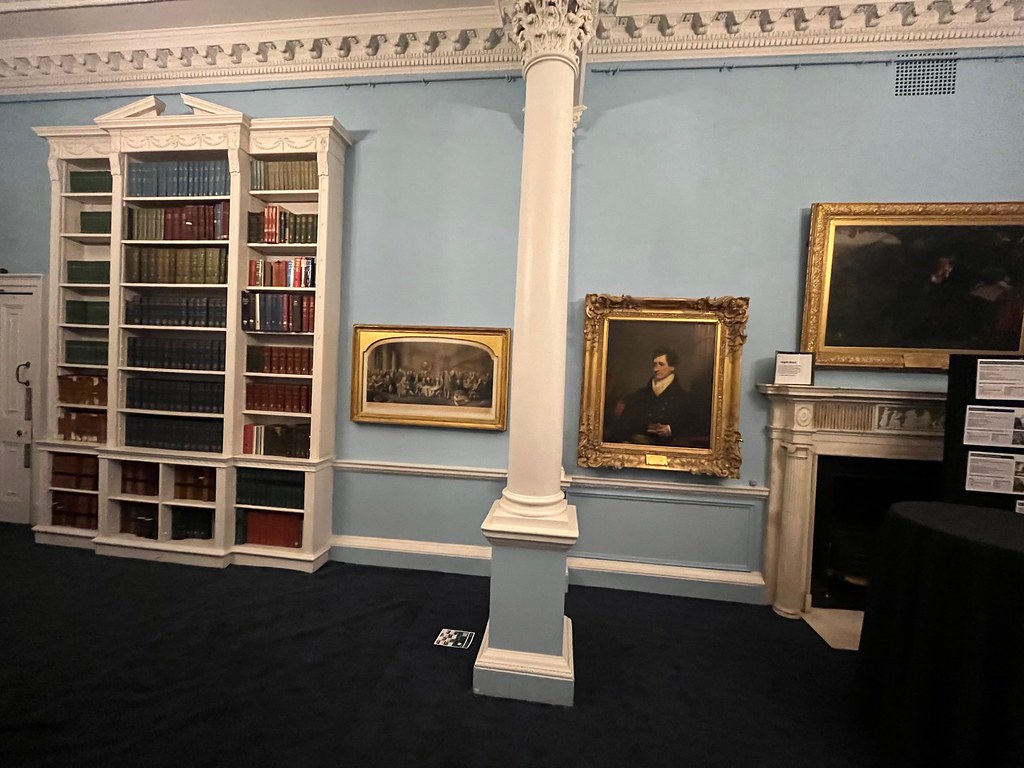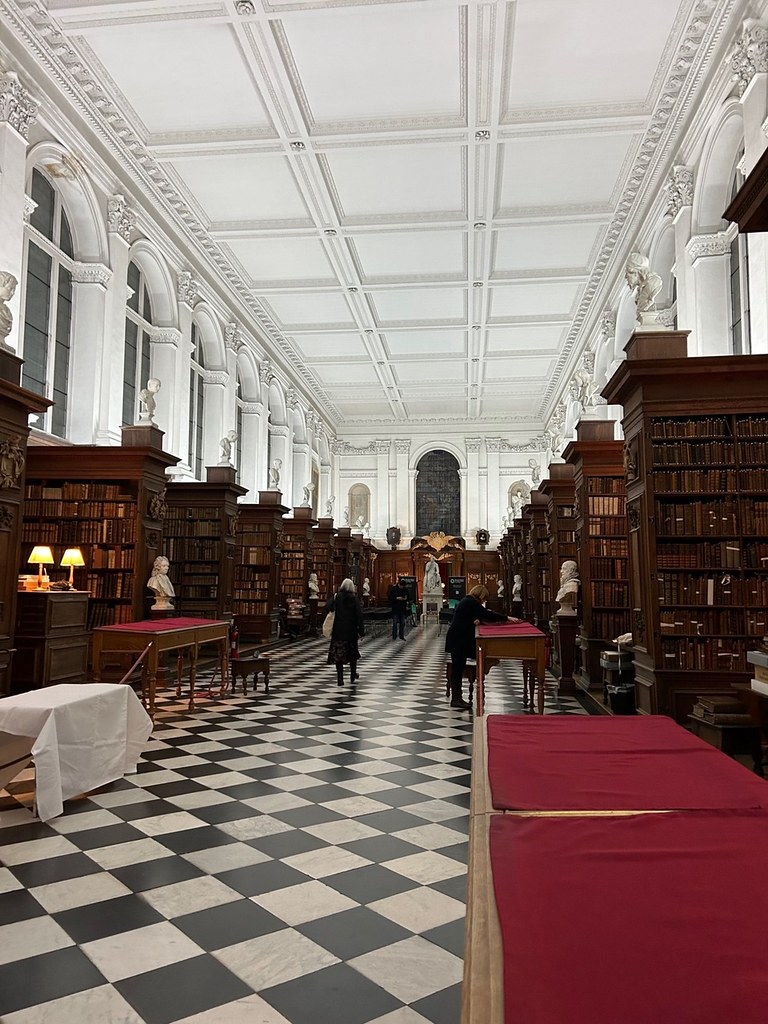Remarkably, I have been in three magnificent rooms of books in the last week, starting off with the Wren Library in Cambridge’s Trinity College. The first photo (which I admit I have taken from Diane Coyle’s Bluesky feed) gives an impression of its massive shape. It’s very high ceilinged and consequently, as we discovered, also very cold. Equally, it’s extremely long with, apparently, 80,000 books still in situ and a wonderful smell of ancient leather tomes which greets you as soon as you walk into the space. I was there, along with Tabitha Goldstaub, Director of Innovate Cambridge, and fellow Fellow of Churchill College and Bennett Professor of Public Policy Diane Coyle, to discuss ‘Why we need more women in science and beyond’ building on my book Not Just for the Boys: Why we need more women in science.
Tabitha is the author of How To Talk To Robots: A Girls’ Guide To a Future Dominated by AI. She did not start off life in the world of tech, but got her degree in advertising, but she has moved further and further into this sphere, becoming increasingly worried, for instance, about the gender bias frequently lurking behind algorithms. Her fears about a tech world full of ‘bro’s’ as she put it, became very clear during our discussions. Diane is an economist, author of a number of books, and her concerns about the lack of women in her field have often been expressed there and elsewhere (e.g. see here). So, there was much common ground between the three of us, as we expressed worries about a world where women are so often ‘not in the room’, leading to decisions which may be biased, ignore half the population or be based on misconceptions.
Despite the chilly temperature in the library, there was a lively Q+A session with the audience after our introductory discussion, overlooked by austere male busts. I had to wonder how many books by female authors there were amongst the 80,000. The Trinity Librarian Nicholas Bell who introduced the event, tried valiantly to make a connection between the library and women in STEM, by pointing out the College possessed the papers of Ada Lovelace’s father, but I’m not sure that connection is very strong, given that Byron seems never to have met his daughter.
A couple of days later I found myself being interviewed in the Georgian Room at the Royal Institution (see the second photo) by Suze Kudu for Digital Science. As with the event in the Wren Library, this interview will appear on YouTube in due course, along with the lecture I gave, also about my book shortly after the interview with Suze, in the famous Royal Institution Lecture Theatre. The Georgian Room also contains a number of old tomes, although nothing like 80,000. Again, we wondered how many books by women graced the shelves. Not many, we guessed, and the portraiture also appeared to be only of males. Unlike my previous lecture at the Royal Institution that I gave a decade or so ago, I was not required to wear evening dress, for which I was grateful. My thanks to Digital Science for sponsoring the lecture. Once again, there was a lively discussion in the Q+A session. Once again, the audience was largely female. I always like talking to audience members afterwards, as I sign their book copies, and I was particularly touched by the comments from one group: they told me how my blog had helped to get them through their PhDs. Years ago I reflected on the possibility of this blog amounting to some sort of online mentoring, and I guess their comments indicate, for some, that is exactly how it has been. I take that as a great compliment.
Unlike my previous lecture at the Royal Institution that I gave a decade or so ago, I was not required to wear evening dress, for which I was grateful. My thanks to Digital Science for sponsoring the lecture. Once again, there was a lively discussion in the Q+A session. Once again, the audience was largely female. I always like talking to audience members afterwards, as I sign their book copies, and I was particularly touched by the comments from one group: they told me how my blog had helped to get them through their PhDs. Years ago I reflected on the possibility of this blog amounting to some sort of online mentoring, and I guess their comments indicate, for some, that is exactly how it has been. I take that as a great compliment.
Finally, I ended up in a room not formally a library, but formerly the Reading Room in the Royal Society, although now it rejoices in the name of Wolfson 1. Busts adorned the room, along with splendid decoration but, finally, a woman could be spotted. The third photograph shows Mary Somerville, for a long time the only woman whose features were on display in the Society’s rooms. Far from true now with, for example, a painting of Jocelyn Bell Burnell being prominent in the entrance hall, portraits of Julia Higgins and Anne Maclaren both – I believe, although I’ve not checked recently – downstairs in the canteen amongst others. Anne was the first woman to be an Officer of the Society (she was the Foreign Secretary, as was Julia subsequently). However, Somerville’s bust was a breakthrough when it first was commissioned in 1832 (it was not received by the Society until 1842), preceding by more than a hundred years the admission of women to the Fellowship. A recent blogpost on the Royal Society’s site will tell you more about the origin of the bust.
I was in this particular room, not to talk about gender issues, but leading a round-table discussion considering what the PhD of the future might look like, and what needs to change, as part of the Royal Society’s Science 2040 project, aimed at imagining what an ideal overall system for science might look like in 2040. Suffice it to say, there were many views, many places where we could all identify the current system was far from ideal but with less agreement on where we would like to end up. I will be fascinated to see what the facilitators distil from our wide-ranging discussions. With Somerville watching over us, a woman whose education bore no relationship to modern structures, yet who made significant contributions to science through the translations and books she wrote, it was interesting to remember PhD’s just weren’t a ‘thing’ in her day anywhere in the world. Times have changed.


